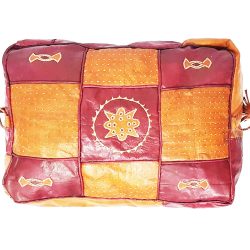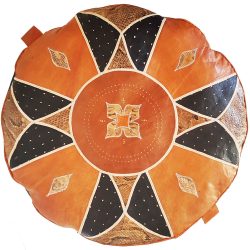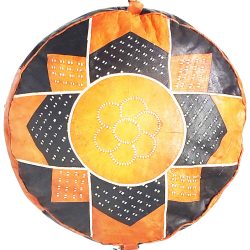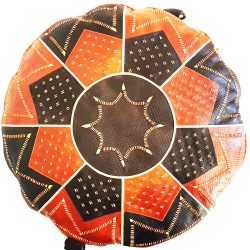Description
African Moroccan Kilim Ottoman
Moroccan rugs are the weaves, carpets, and textiles that
have been traditionally hand-woven in Morocco.
Rugs have been woven by the indigenous people of Morocco
since the Paleolithic Era. Traditionally, Moroccan rugs
have been woven by tribal peoples for their utility rather
than for decorative purposes. Twentieth-century Moroccan
rugs are widely collected in the West, and are almost always
woven by tribes people who do not seek nor possess formal artistic training.
In the historic area encompassing the modern nation of Morocco,
the tradition of rug-making is just about as old as it is anywhere in the world.
The early adoption of rug-making by native Moroccans is
certainly due in large part to the distinctive climate of the region:
Moroccan rugs may be very thick with a heavy pile,
making them useful for the snow-capped Atlas Mountains;
or they may be flat woven and light as to suit the hot climate
of the Sahara desert.
The nomadic Moroccans and Berber
tribes used these pile, knotted, and flat-woven carpets as
bed coverings and sleeping mats, as well as for self-adornment,
and burial shrouds. Some of these rugs were also used for as saddle blankets.
The designs that most frequently appear in Moroccan
rugs are traditional and ancient, passed down from weaver to weaver.





